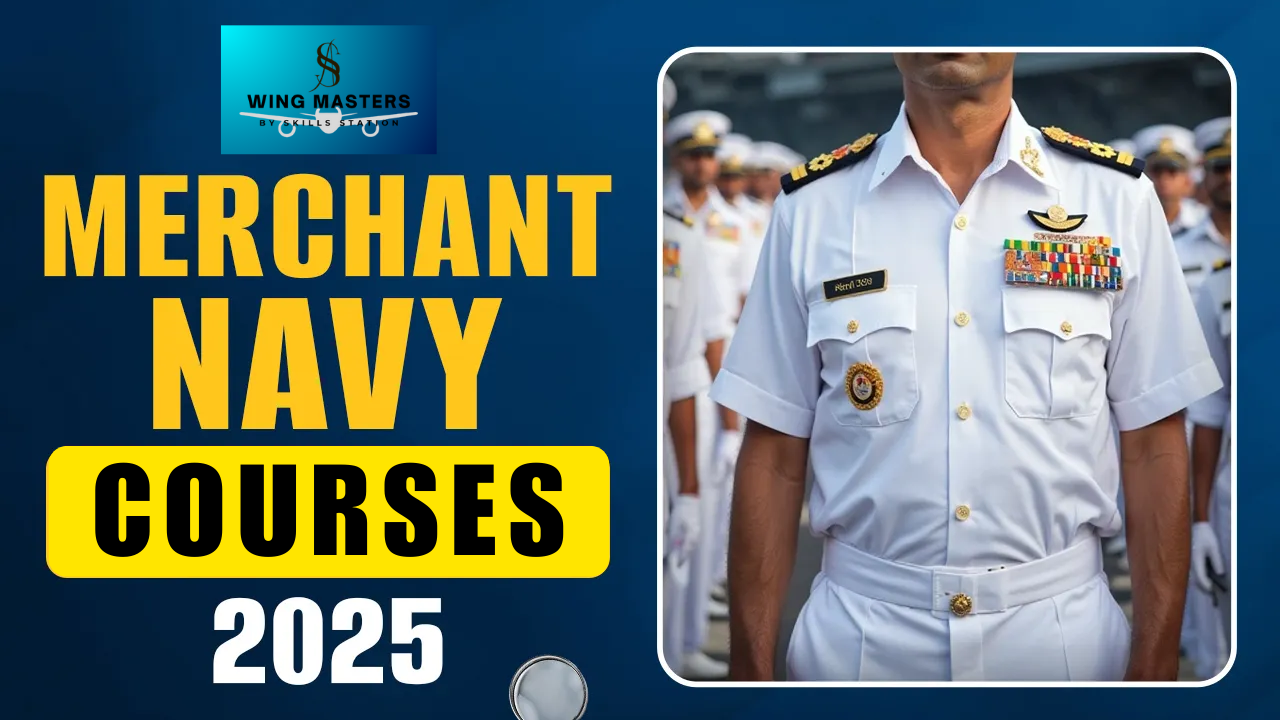
Choosing the right merchant navy courses is the first and most vital step toward a successful maritime career. With various entry points like GP Rating, DNS, B.Sc. Nautical Science, and GME, each course leads to a different rank and responsibility on board. Understanding these paths helps you align your educational background and career goals with the right course.
At SkillsStation, we’re committed to helping students and maritime aspirants make confident career choices. We provide accurate, updated guidance on professional training, entrance requirements, and industry insights to keep you ahead in your journey.
Introduction to Merchant Navy Courses
The shipping industry offers a structured path to high-paying, adventurous careers through several merchant navy courses. These courses cater to different educational qualifications and career objectives—whether you’re starting after 10th, 12th, or as a graduate.
Understanding the course structure, eligibility, and duration of each program is critical. The right choice not only determines your entry rank but also affects your long-term career progression.
1. GP Rating Course
The GP Rating course is one of the most popular merchant navy courses for students who have completed their 10th grade. It allows entry into the deck or engine departments as a trainee and provides hands-on skills required onboard.
This 6-month program equips candidates with fundamental training in seamanship, firefighting, first aid, and basic engineering. Upon successful sea-time and exams, candidates can rise to higher ranks through internal promotions or advanced certifications.
2. Diploma in Nautical Science (DNS)
The DNS program is a 1-year residential course that leads to a B.Sc. Nautical Science degree after completing onboard training. It is one of the most career-focused merchant navy courses for 12th-pass students (PCM with a minimum of 60%).
DNS is designed for those who wish to become Deck Officers. After completing this course and subsequent sea service, candidates appear for the second mate exam, setting them on the path to becoming Captains in the long run.
3. B.Sc. in Nautical Science
The 3-year B.Sc. A Nautical Science degree is among the most comprehensive merchant navy courses, ideal for those committed to a long-term maritime career. It provides deep theoretical knowledge and practical training required for the deck department.
Eligibility includes 12th-grade science with PCM and English. After successful course completion and onboard training, candidates can take exams to qualify for officer-level positions.
4. B.Tech in Marine Engineering
For those aiming to become marine engineers, a B.Tech in Marine Engineering is the most advanced of all merchant navy courses. This 4-year course combines academic rigor with industrial-level training for engine room operations and machinery maintenance onboard.
Graduates enter as Junior Engineers and, with experience, can rise to Chief Engineer roles. The eligibility typically requires 12th-grade science with strong marks in PCM and English.
5. Graduate Marine Engineering (GME)
The GME course is one of the top choices among merchant navy courses for engineering graduates. This 1-year postgraduate program is available for mechanical or naval architecture graduates who want to enter the maritime industry as marine engineers.
It includes technical training, ship visits, and simulation-based instruction. After sea-time, graduates can take exams to move up the engineering ranks.
6. Electro-Technical Officer (ETO) Course
With advancements in marine electronics, the demand for ETOs is increasing. The ETO course is a 4–6 month program that trains electrical/electronics engineering graduates for shipboard electrical systems.
It is one of the emerging merchant navy courses for candidates interested in the technical side of shipping. This role involves maintaining and repairing electrical equipment, making it crucial for ship safety and efficiency.
Choosing the Right Course Based on Your Qualification
Your academic background plays a critical role in selecting the right merchant navy courses. Here’s a quick breakdown:
10th Pass: GP Rating
12th (PCM): DNS, B.Sc. Nautical Science, B.Tech Marine
Engineering Graduates: GME, ETO
Choosing a course that matches your qualifications ensures smoother admission and career growth.
Merchant Navy Eligibility Criteria
Each of these merchant navy courses comes with its own set of eligibility requirements. However, there are a few standard criteria that apply to all:
Medical Fitness: Candidates must be medically fit as per DG Shipping standards.
Eyesight: 6/6 vision in each eye is required; no color blindness.
Age Limit: Typically between 17.5 to 25 years depending on the course.
Academic Requirements: Vary from 10th to graduation level, with a focus on science streams.
Fulfilling these merchant navy eligibility criteria is non-negotiable, as shipping companies and institutes follow them strictly.

How to Join Merchant Navy Through Courses
Understanding how to join merchant navy begins with choosing the right course. Here’s a simplified process:
Choose the right course based on qualifications and career goals.
Apply to DG Shipping-approved institutes offering the course.
Pass medical and entrance tests, if applicable.
Complete training and receive mandatory certifications like STCW.
Join a shipping company or appear for onboard placement.
Following this roadmap ensures that your training and qualifications are industry-recognized, improving job prospects significantly.

Merchant Navy Advantages and Disadvantages
Before enrolling in merchant navy courses, it’s essential to consider the merchant navy advantages and disadvantages:
Advantages:
High salary and tax-free income
Opportunity to travel worldwide
Early financial independence and career growth
Disadvantages:
Long periods away from home
Physically and mentally demanding
Risk of isolation and strict regulations
Evaluating these aspects helps you make an informed decision aligned with your lifestyle and ambitions.
Course Duration and Fees Overview
Each of the merchant navy courses has different durations and associated costs:
GP Rating: 6 months | ₹2–3 lakhs
DNS: 1 year | ₹4–6 lakhs
B.Sc. Nautical Science: 3 years | ₹6–8 lakhs
B.Tech Marine: 4 years | ₹8–10 lakhs
GME: 1 year | ₹3–5 lakhs
ETO: 4–6 months | ₹2.5–4 lakhs
Course fees depend on the institute, infrastructure, placement records, and training quality. Always choose DG Shipping-approved institutes to ensure placement and quality standards.
Placement Opportunities After Courses
Most merchant navy courses offer placement support, particularly those conducted by reputed training institutes. Top Indian and international shipping companies regularly recruit cadets and junior engineers directly from campus.
Placement rates are generally higher for DNS, B.Sc., and B.Tech programs from top-tier academies. Institutes with ship-owning or ship-management tie-ups offer better chances of immediate onboard training.
Career Growth and Promotions
After completing merchant navy courses, career progression depends on your onboard performance, additional certifications, and exams. Promotion pathways include:
Deck Side: Deck Cadet → Third Officer → Second Officer → Chief Officer → Captain
Engine Side: Junior Engineer → Fourth Engineer → Third Engineer → Second Engineer → Chief Engineer
ETO: Electrical Officer → Senior ETO
With the right dedication and sea-time, one can reach officer ranks within 7–10 years of joining the industry.
Conclusion
Choosing the right merchant navy courses is the foundation of a successful career at sea. The type of course you pursue affects everything—from your entry-level position to long-term promotion prospects. At SkillsStation, we guide aspiring seafarers through every stage of this journey—from course selection to eligibility, training, and placement. If you’re ready to begin your maritime career, the best navy academy in Dehradun could be the perfect place to start.
